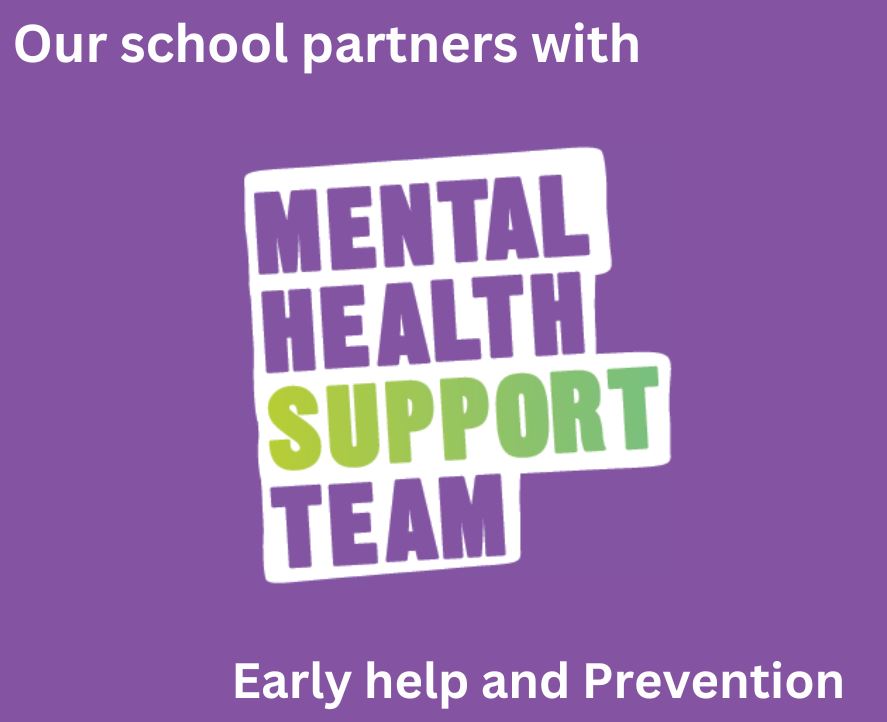Phonics at Rednal Hill Infant School
/76831727A340B906D0B1B75C5C5BC477.JPG)
To ensure all children develop secure reading skills, the DfE expects schools to follow programmes that are structured and systematic to teach children to use phonics as the way to read unknown words.
As a school, we have recently started to follow Little Wandle: Letters and Sounds Revised as it closely matched the structures and systems that were already in place. It uses up-to-date research on how best children learn and remember, so that children can reach the expected level at the end of each year group. Through daily phonic sessions, children rehearse previous sounds, learn new sounds as well as applying what they have learned in reading sessions to develop fluency and comprehension (understanding).
Nursery
Although, more formal phonic sessions begin at the start of the Reception Year, children from Nursery are exposed and immersed in stories, rhymes and sounds around them to build the foundation of hearing different sounds.
During this phase children are supported to identify differences in sounds that they hear in the environment and through the sounds they make. They develop their listening and attention skills through activities, stories and rhymes and role play while exploring sounds and words. Developing children’s articulation and pronunciation of words is prioritised.
Reception Year
As children begin Reception, they will continue to develop their listening and attention skills with the introduction of ‘phonic sessions’ where they begin to learn the letter shape, the sound it makes and how to write it. They will start to ‘blend’ sounds together to read the word by saying each sound and then the whole word (h-a-t = hat) and also spelling the word by breaking down the whole word into its sounds hat = h-a-t).
Children will also be taught some words that can not be broken down into sounds as the sounds do not make the ‘correct’ sound. These are called tricky words because the sounds do not help with reading and can ‘trick’ children when they are reading. We say to children that we just have to remember these words as they are used a lot in sentences and what we read. Some words are tricky at this stage because they haven’t learnt the sounds yet, but they are common words.
Sounds are learned in groups, which are then used to make words for children to practise blending. Once a child is secure in reading a set of sounds and is developing their blending they will receive a home reader with those sounds. As children learn and remember the next set of sounds they will move on to the next set of books to bring home.
This process means children will be able to read the words in the books they read as they will know the sounds, allowing them to practise blending the words and then sentences. In terms of Home Reading books, children can feel they are the experts for their grown-ups.
https://www.littlewandlelettersandsounds.org.uk/resources/for-parents/
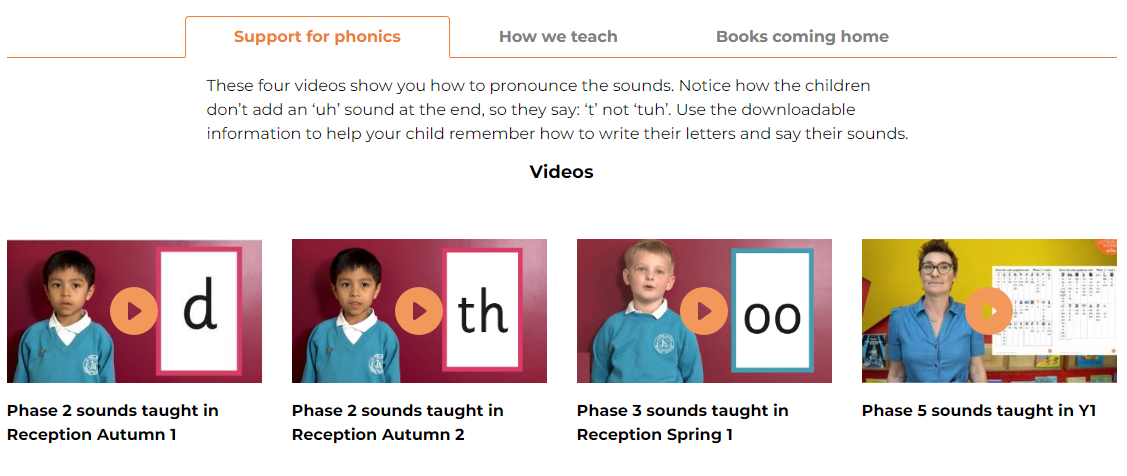
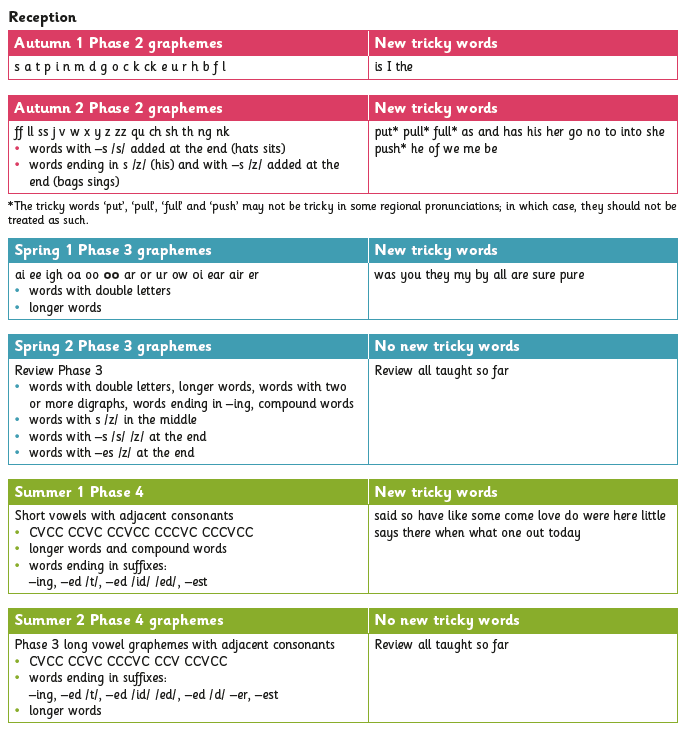
Year One
Children build on what they have learnt, building speed when reading sentences and stories. Children have time to consolidate and secure all sounds taught to date, using them in read stories and different texts.
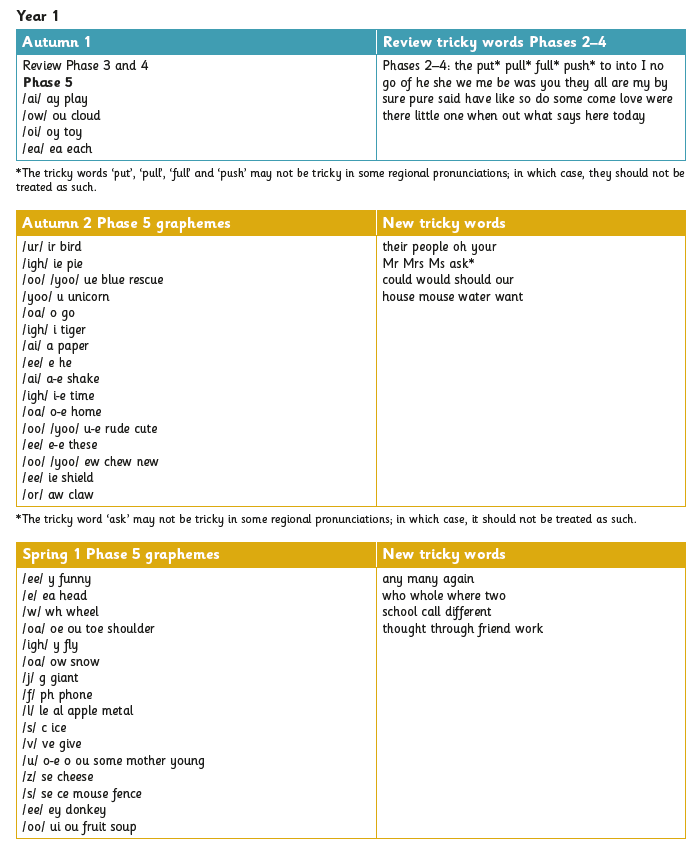
All children develop their reading skills alongside their developing phonic knowledge throughout all phrases.
Reading
Phonics is important in developing effective reading skills, for children to become effective readers, but it is not an end in itself. Our children are taught phonics as part of a language rich curriculum, so that they develop their wider reading skills at the same time. Research shows that when phonics is taught in a structured way and regularly- starting with the easiest sounds, progressing through to the most complex- it’s the most effective way of teaching young children to read, alongside instilling a ‘love for books’. It’s particularly helpful for children aged 5-7.
Home Readers
We believe children should have access to a range of different styles of books. We have organised our home reader books into matching sets that the sounds are taught in. Children will bring home books which match the sounds they know well, so that they can focus on using them in words and sentences independently.
Children also have a Home Reading Diary which we encourage adults to use as a way of communicating with school and vice-versa.
We hold reading Workshops for parents in the Autumn term to support reading at home and operate an open-door policy if you wish to speak with your child’s class teacher. We really encourage dialogue between home and school, so please leave comments in the reading diary with your child each week or share on Tapestry books you have shared at home.
Reading for Pleasure
Another aspect of instilling a ‘love of reading’ is for children to enjoy having stories read to them. We have a selection of books that children can vote to read as a class novel/ story. Time is set aside each day for adults to read to children for pure enjoyment. This also models expressive and engaging story telling to the children.
Core Texts in Every Class
Each class has 10 stories that they will have read to them regularly over the year, promoting a deep level of comprehension of these texts. Children are exposed to a really rich variety of texts, both fiction and non-fiction throughout their journey from Nursery to Year 2.
To help children learn and remember each of the sounds, we provide children with sound mats where they can quickly remind themselves of the shape and rhyme that will help them form the letter.
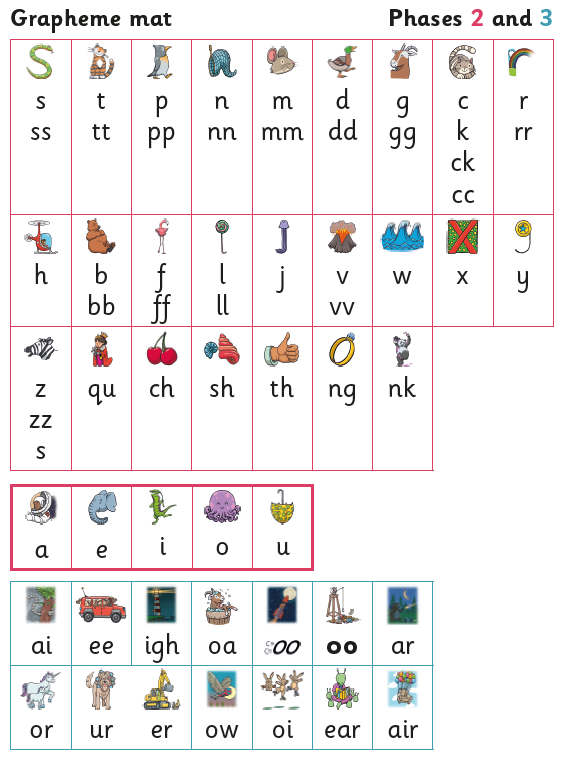
What do the Phonics terms mean?
Phoneme: The smallest unit of sound in a word, e.g c/a/t, sh/o/p, t/ea/ch/er.
Grapheme: A letter or group of letters representing one sound e.g. sh, igh, t.
Diagraph: Two letters, which together make one sound, e.g. sh, ch, ai, oy.
Split diagraph: Two letters, which work as a pair, spilt by another letter, to represent one sound, e.g. a-e as in cake, i-e as in smile.
Trigraph: Three letters which together make one sound, e.g. igh as in light, ear as in beard.
Segmentation: Means hearing the individual phonemes within a word- for instance the word ‘crash’ consists of four phonemes: ‘c-r-a-sh.’ In order to spell this word, a child must segment it into its component phoneme and choose a grapheme to represent each phoneme.
Blending: Means merging the individual phonemes together to pronounce a word. In order to read an unfamiliar word, a child must recognise (sound out) each grapheme, not each letter.
Comprehension: Understanding of language whether it is spoken or written.
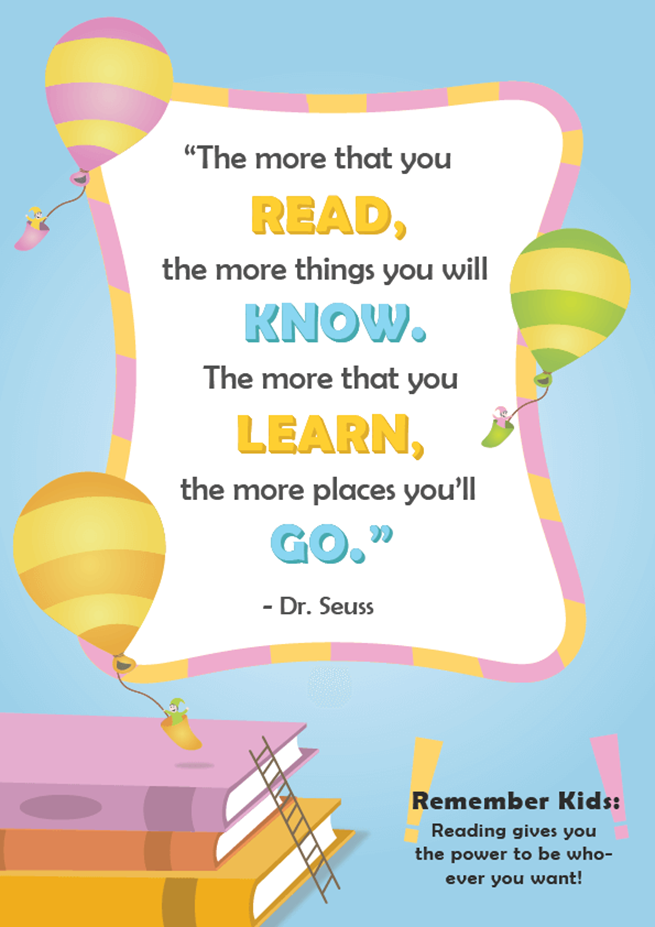
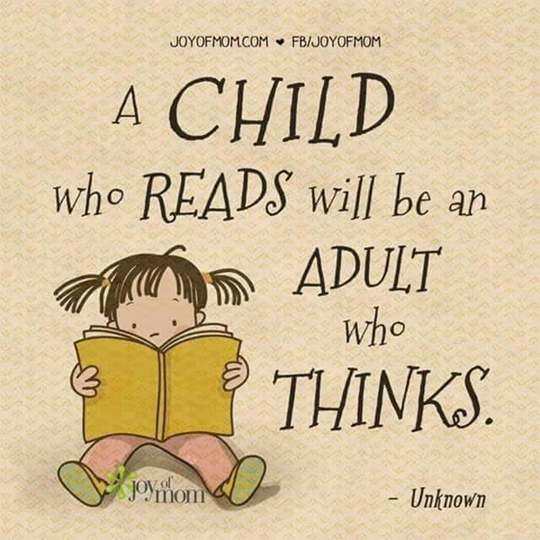
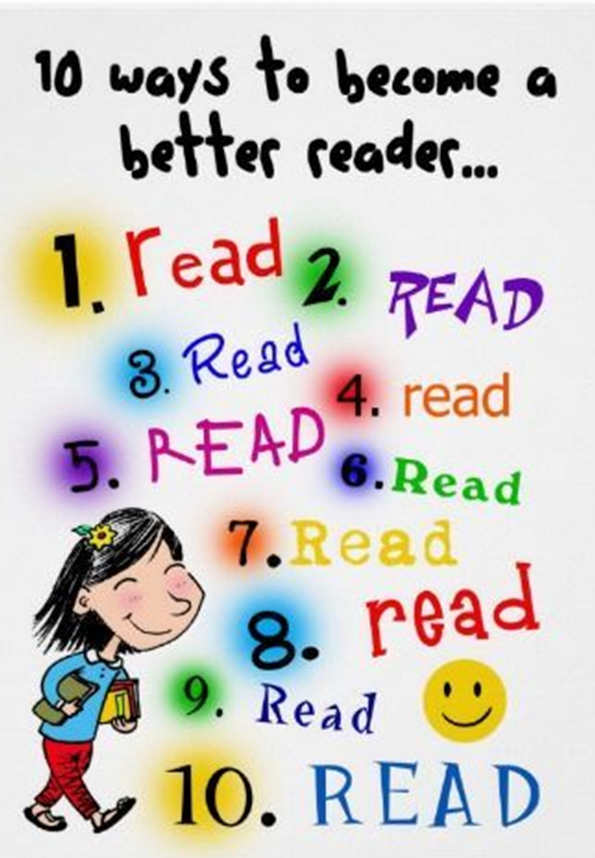

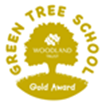


/2F852788EB9958830755EEA82381EA1F.png)
